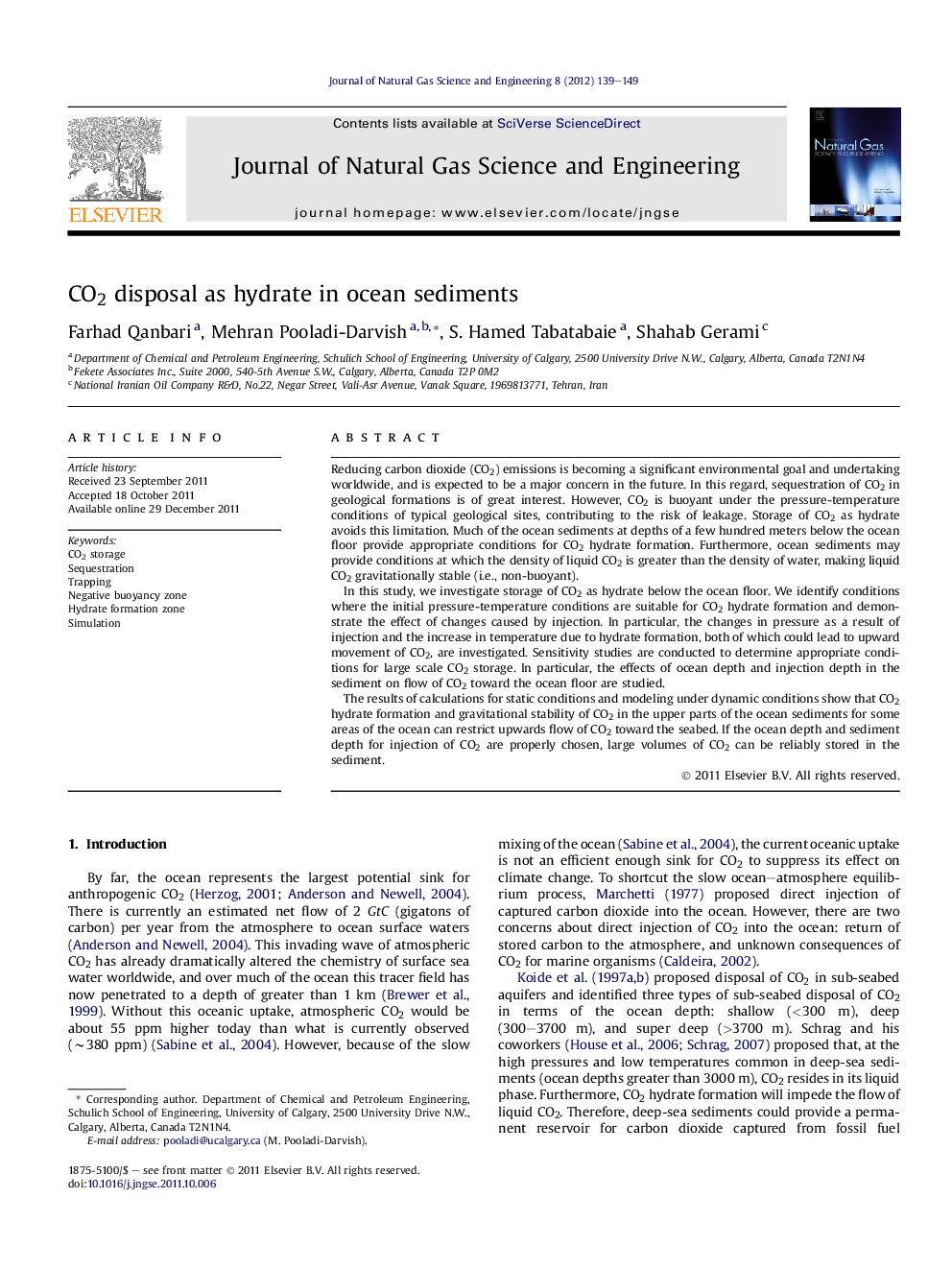| کد مقاله | کد نشریه | سال انتشار | مقاله انگلیسی | نسخه تمام متن |
|---|---|---|---|---|
| 1758232 | 1523032 | 2012 | 11 صفحه PDF | دانلود رایگان |

Reducing carbon dioxide (CO2) emissions is becoming a significant environmental goal and undertaking worldwide, and is expected to be a major concern in the future. In this regard, sequestration of CO2 in geological formations is of great interest. However, CO2 is buoyant under the pressure-temperature conditions of typical geological sites, contributing to the risk of leakage. Storage of CO2 as hydrate avoids this limitation. Much of the ocean sediments at depths of a few hundred meters below the ocean floor provide appropriate conditions for CO2 hydrate formation. Furthermore, ocean sediments may provide conditions at which the density of liquid CO2 is greater than the density of water, making liquid CO2 gravitationally stable (i.e., non-buoyant).In this study, we investigate storage of CO2 as hydrate below the ocean floor. We identify conditions where the initial pressure-temperature conditions are suitable for CO2 hydrate formation and demonstrate the effect of changes caused by injection. In particular, the changes in pressure as a result of injection and the increase in temperature due to hydrate formation, both of which could lead to upward movement of CO2, are investigated. Sensitivity studies are conducted to determine appropriate conditions for large scale CO2 storage. In particular, the effects of ocean depth and injection depth in the sediment on flow of CO2 toward the ocean floor are studied.The results of calculations for static conditions and modeling under dynamic conditions show that CO2 hydrate formation and gravitational stability of CO2 in the upper parts of the ocean sediments for some areas of the ocean can restrict upwards flow of CO2 toward the seabed. If the ocean depth and sediment depth for injection of CO2 are properly chosen, large volumes of CO2 can be reliably stored in the sediment.
Journal: Journal of Natural Gas Science and Engineering - Volume 8, September 2012, Pages 139–149